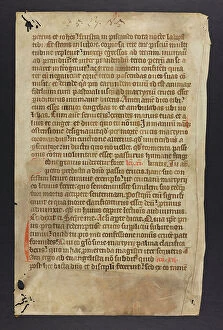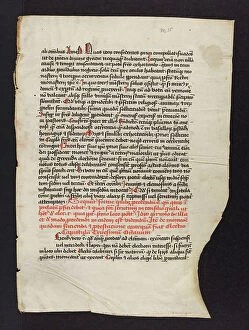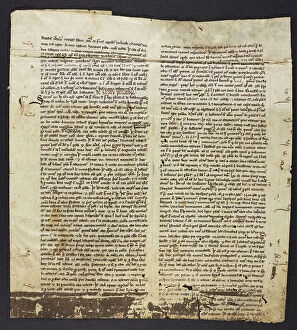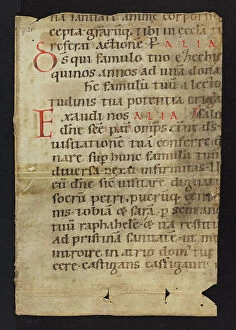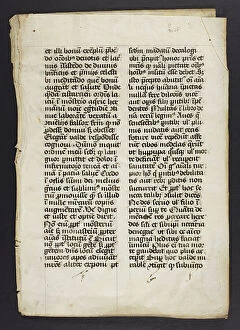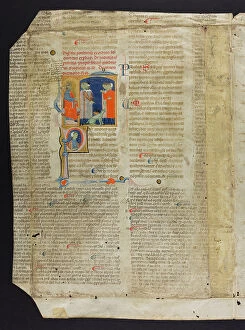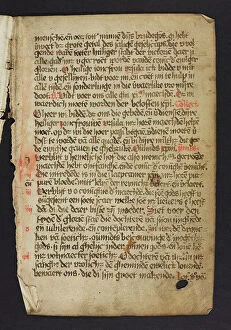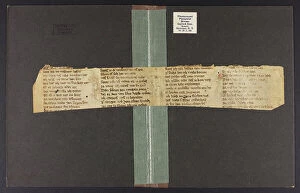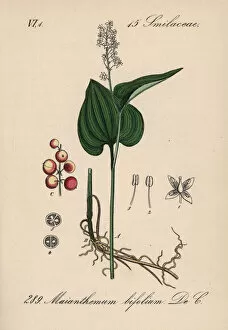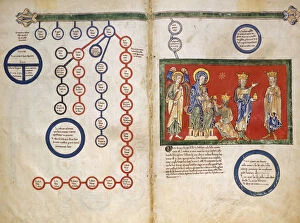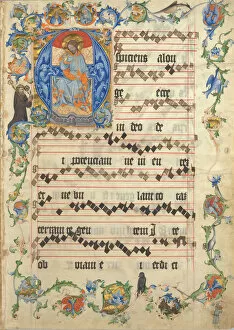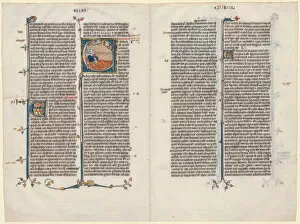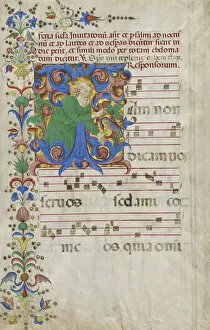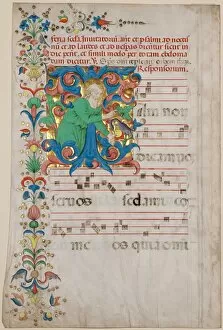Bifolium Collection
"Bifolium: A Glimpse into the Fragments of History" Step back in time as we explore the enigmatic world of bifolium
For sale as Licensed Images
Choose your image, Select your licence and Download the media
"Bifolium: A Glimpse into the Fragments of History" Step back in time as we explore the enigmatic world of bifolium, a collection of fragmented texts that offer tantalizing glimpses into various aspects of human knowledge and culture. From antiphonal chants to biblical commentaries, this compilation encompasses a wide range of subjects. Among these fragments lies an antiphonal, echoing melodic prayers sung by ancient religious communities. The Epistles of St Jerome reveal snippets of wisdom from one of Christianity's most influential figures, while unknown texts hint at lost stories waiting to be unraveled. Delving deeper, we encounter fragments from a biblical commentary that shed light on interpretations and understandings passed down through generations. Statutes for elections provide insight into governance practices long forgotten but still relevant today. Intriguingly, theological texts offer philosophical musings on life's profound questions. Ritual fragments transport us to sacred ceremonies performed with utmost reverence and devotion. Meanwhile, remnants from Justinian Digesta invite us to explore legal principles that shaped ancient societies. The Gebetbuch fragment offers a glimpse into personal devotions and intimate conversations with the divine. On another note entirely, Dietrich's Erste Ausfahrt reveals hints about musical compositions or perhaps even tales yet untold. Lastly, a missal fragment invites us into the solemnity and grandeur of liturgical celebrations throughout history. Each bifolium holds within it whispers from eras past – echoes yearning to be heard once more. These scattered pieces are like puzzle parts waiting patiently for scholars' meticulous efforts to piece them together again. In their fragmented state lies both mystery and potential discovery—a testament to our collective thirst for knowledge about our shared human heritage.





